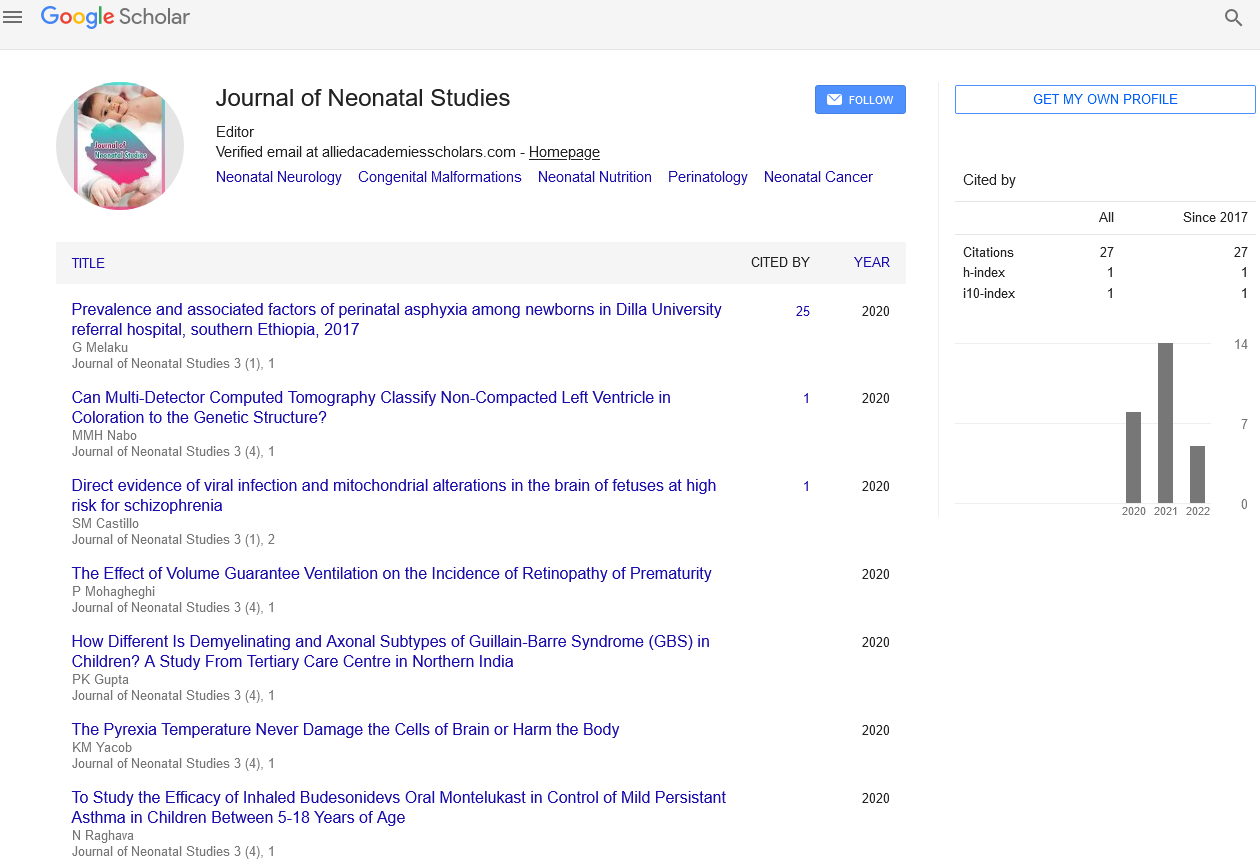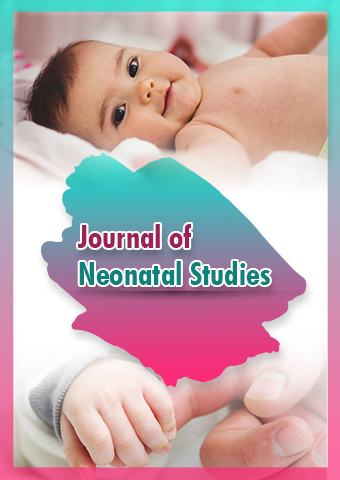Perspective - Journal of Neonatal Studies (2024) Volume 7, Issue 4
Neonatal Jaundice: An Overview
- Corresponding Author:
- Kyander Aleksis
Department of Phototherapy, University of Jyvaskyla, Finland
E-mail: Kyander7aleksis9@jyu.edu
Received: 03-Jul-2024, Manuscript No. JNS-24-150526; Editor assigned: 05-Jul-2024, PreQC No. JNS-24-150526 (PQ); Reviewed: 19-Jul-2024, QC No. JNS-24-150526; Revised: 20-Aug-2024, Manuscript No. JNS-24-150526 (R); Published: 27-Aug-2024, DOI: 10.37532/JNS.2024.7(4).258-260
Introduction
Causes of neonatal jaundice
Several factors contribute to the development of neonatal jaundice:
Physiological jaundice: The most common cause, physiological jaundice, occurs as a natural process in newborns. It typically appears within the first two to four days of life and resolves within one to two weeks. This type is due to the immaturity of the liver, which is less efficient at processing bilirubin.
Breastfeeding jaundice: This type can occur in the first week of life and is often due to inadequate breastfeeding. Poor intake of breast milk can lead to dehydration and reduced bilirubin elimination.
Breast milk jaundice: Appearing after the first week of life, breast milk jaundice is thought to be due to substances in breast milk that increase the reabsorption of bilirubin from the intestines.
Hemolytic disease: Conditions such as Rh incompatibility or ABO incompatibility between the mother and baby can cause increased breakdown of red blood cells, leading to elevated bilirubin levels.
Prematurity: Preterm babies are at higher risk of jaundice because their livers are even less mature and less capable of processing bilirubin efficiently.
Infections and other conditions: Infections, certain genetic disorders, and liver or bile duct abnormalities can also lead to jaundice.
Description
Symptoms and diagnosis
The primary symptom of jaundice is the yellowing of the skin and the whites of the eyes. This typically starts on the face and then spreads to the chest, abdomen, arms, and legs as bilirubin levels increase. Other symptoms can include poor feeding, lethargy, and dark urine.
Diagnosis is usually based on a physical examination and the measurement of bilirubin levels in the blood. This can be done through a blood test or a non-invasive device that measures bilirubin levels through the skin. In some cases, additional tests may be needed to identify the underlying cause of jaundice.
Treatment and management
The treatment of neonatal jaundice depends on its severity and underlying cause:
Phototherapy: This is the most common treatment for jaundice. The baby is placed under special blue lights that help break down bilirubin in the skin. It’s a safe and effective treatment, with minimal side effects.
Exchange transfusion: In severe cases, where bilirubin levels are dangerously high and not responding to phototherapy, an exchange transfusion may be necessary. This procedure involves replacing the baby’s blood with fresh donor blood to rapidly reduce bilirubin levels.
Intravenous Immunoglobulin (IVIg): For babies with hemolytic disease, IVIg can help reduce the breakdown of red blood cells and lower bilirubin levels.
Enhanced feeding: Increasing the frequency of feedings can help reduce bilirubin levels by promoting more frequent bowel movements, which helps eliminate bilirubin from the body. In cases of breastfeeding jaundice, ensuring adequate breastfeeding or supplementing with formula may be necessary.
Prevention and early detection
Preventing and detecting jaundice early can help manage the condition effectively and reduce the risk of complications. Key strategies include:
Monitoring: Close monitoring of bilirubin levels in newborns, especially those at higher risk, is crucial. This includes regular check-ups and bilirubin measurements during the first week of life.
Breastfeeding support: Providing support and education to mothers on effective breastfeeding techniques can help ensure adequate milk intake and reduce the risk of breastfeeding jaundice.
Screening: Universal screening for jaundice before discharge from the hospital can help identify babies at risk and ensure timely treatment.
Parental awareness: Educating parents about the signs of jaundice and the importance of early intervention can help them seek medical attention promptly if they notice any symptoms.
Complications of untreated jaundice
While most cases of neonatal jaundice are mild and resolve without intervention, severe jaundice that is not treated can lead to serious complications. The most significant of these is kernicterus, a type of brain damage that can result from very high levels of bilirubin. Kernicterus can cause long-term neurological problems, including cerebral palsy, hearing loss, vision problems, and intellectual disabilities. Therefore, early detection and management of jaundice are critical to preventing such complications.
Case studies and success stories
Several success stories highlight the importance of early detection and treatment of neonatal jaundice:
Case study 1: A preterm infant born at 34 weeks developed significant jaundice within the first 48 hours of life. The baby was promptly treated with phototherapy, and bilirubin levels were closely monitored. With aggressive treatment and supportive care, the infant’s jaundice resolved without any long-term complications.
Case study 2: A full-term infant was diagnosed with breastfeeding jaundice due to inadequate milk intake. Lactation support and increased breastfeeding sessions helped improve milk intake, and the baby’s bilirubin levels gradually decreased without the need for phototherapy.
Case study 3: A baby with Rh incompatibility developed severe jaundice shortly after birth. The infant underwent an exchange transfusion, which successfully lowered bilirubin levels. Ongoing monitoring and follow-up care ensured the baby’s healthy development.
Future directions in jaundice research and management
Research in neonatal jaundice continues to evolve, with ongoing studies exploring new diagnostic tools, treatment modalities, and preventive strategies. Some areas of focus include:
Non-invasive monitoring: Advances in technology are leading to the development of non-invasive devices for continuous bilirubin monitoring. These devices can provide real-time data and reduce the need for frequent blood tests.
Genetic factors: Research into the genetic factors that influence bilirubin metabolism and the risk of jaundice may help identify infants at higher risk and guide personalized treatment approaches.
New treatment options: Investigating new therapies, such as pharmacological agents that enhance bilirubin excretion, may offer additional treatment options for severe jaundice.
Global health initiatives: Efforts to improve the diagnosis and treatment of jaundice in low-resource settings are essential for reducing the global burden of the condition. This includes developing cost-effective screening and treatment protocols that can be implemented in underserved areas.
Conclusion
Neonatal nursing is a specialized field dedicated to providing comprehensive care for newborn infants during their initial days of life. This crucial period requires skilled nursing intervention to support the transition from intrauterine to extrauterine life and promote the health and well-being of neonates. In this article, we will explore essential nursing guidelines for neonates, covering various aspects of care, from assessment and monitoring to feeding and developmental support.

